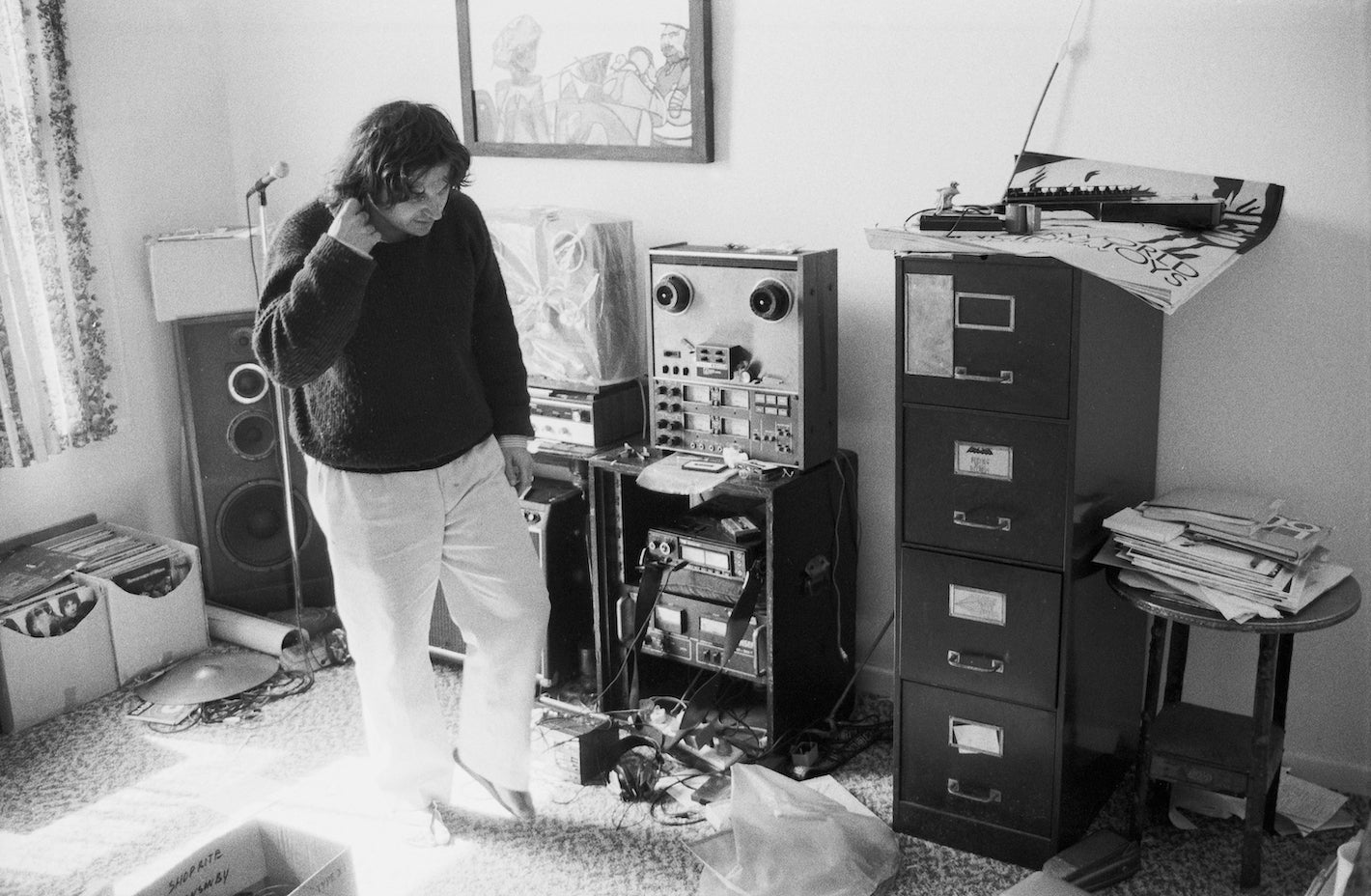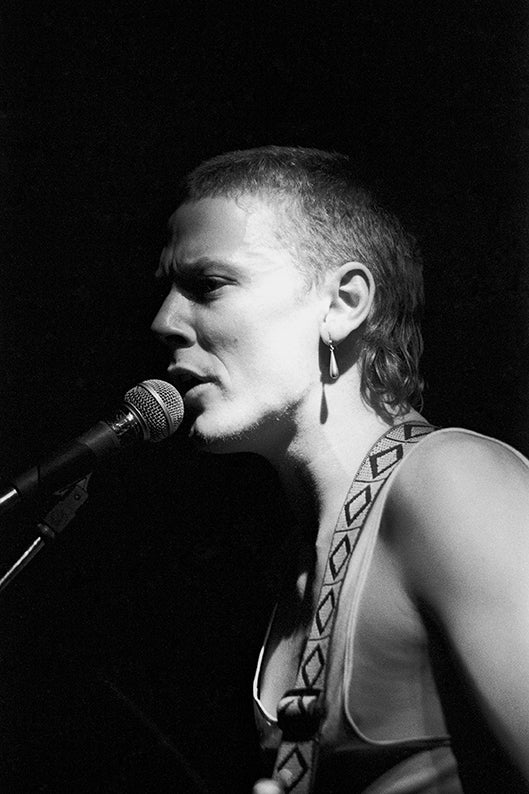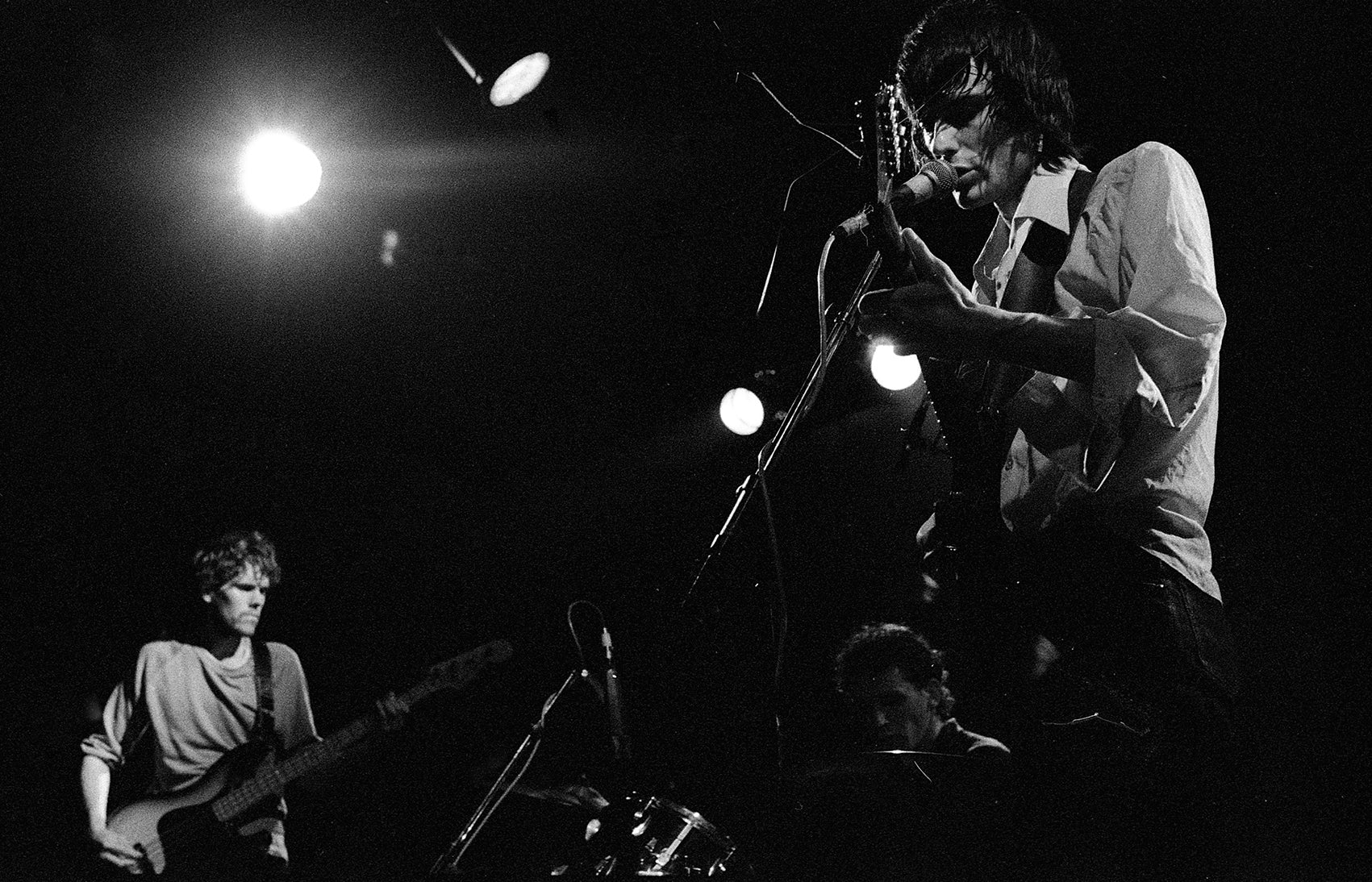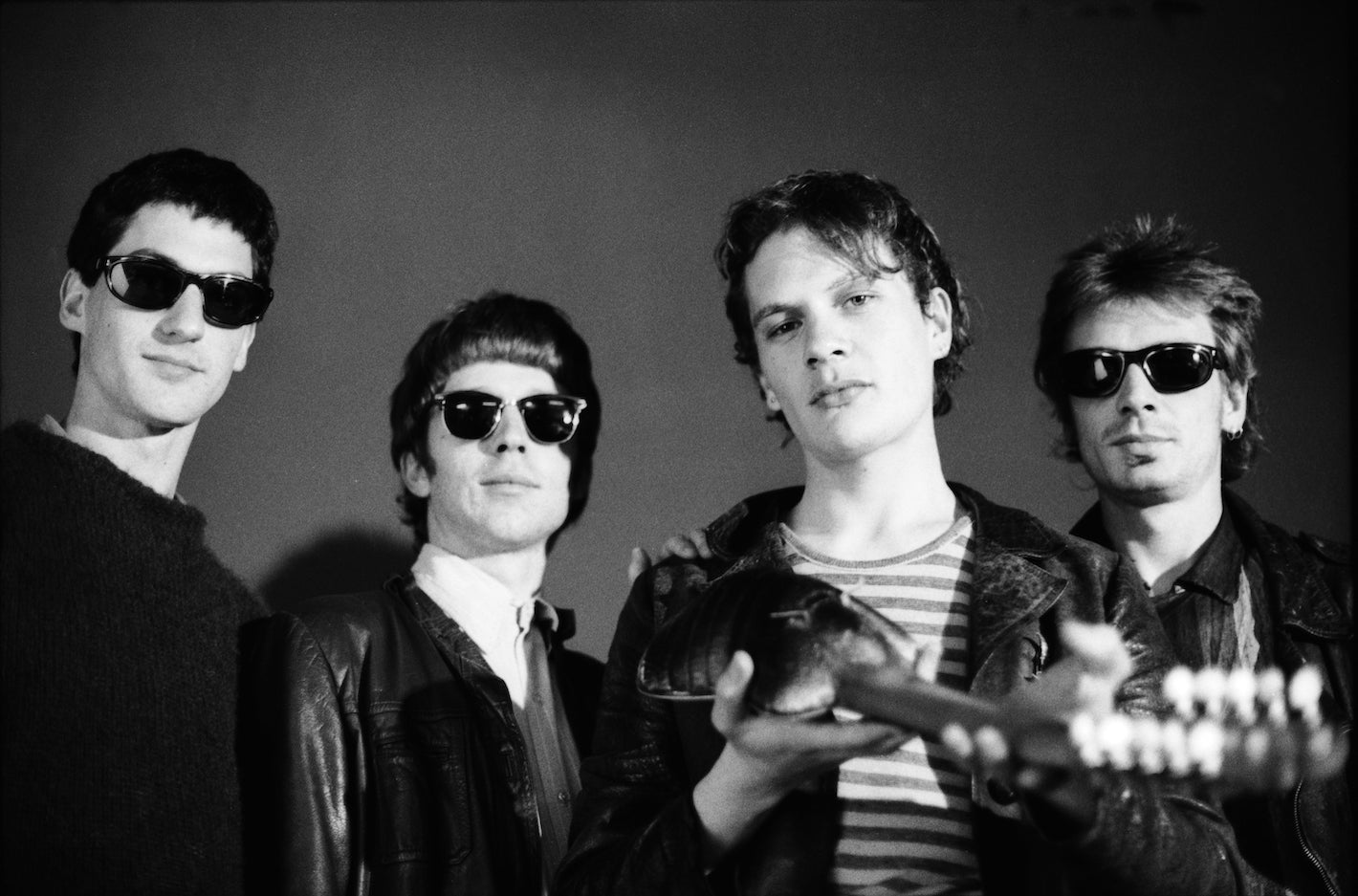
THE CLEAN AT THE GLUEPOT, SATURDAY, OCTOBER 13 1990. PHOTO: JONATHAN GANLEY
From 1982 to 1990, the photos you’ve assembled for 'Crush' span just shy of 10 years. It’s hard not to romanticise this particular era of underground alternative music when you have all these fantastic moments and artists captured and preserved. Do you feel some of that vitality and spark was lost towards the turn of the century?
It is hard to be objective when looking back, because music is so personal and subjective, but at the end of the 1990s there was less music that grabbed me with the same feeling that it had when I was younger. Perhaps something was lost as the underground came to the surface, as Nirvana and Soundgarden had huge success, and REM went from cult status to stadium gigs. On the other hand, there was an explosion in vital new sounds as hip-hop, house, techno, dub, and electronic music swept the world.
Music is always changing and diversifying, and although it’s exciting to hear different influences evolve over time into new musical forms, your formative musical experiences have an emotional charge. The music you loved as a teenager and young adult will always hold a special place in your head and heart.

CHRIS KNOX AT HOME, WITH TEAC 4-TRACK, SUMMER ST, PONSONBY, OCTOBER 1983. PHOTO: JONATHAN GANLEY
The venues featured in 'Crush' seemed to vary in size and quality, from house party ragers to established music venues. What were the challenges that arose from shooting on film in such varied places?
The challenge in all the venues was working with the lighting and the lines of sight. I never liked using flash so the available stage light was important. An old-fashioned lighting rig with bright incandescent spotlights, preferably with plenty of white light, was needed to get good exposures on film. Judging exposures could be tricky, because lighting can change so fast; bright areas can become overexposed, and the image becomes difficult to print because of the extreme contrast between brightness and shadow. The bigger venues like Mainstreet, The Gluepot, the Windsor Castle, and later The Galaxy and The Powerstation, all had adequate lighting for photography, although it could also depend on the whims of the person operating the lights.
For the best lines of sight, it was crucial to get close to the stage. I liked to keep a low profile, and sometimes it would feel edgy moving through the audience, so my camera stayed in my bag until I was in the right place to take photos. I mostly used a standard 50mm lens, or a small 35-70mm telephoto lens, and these lenses didn’t allow close-ups of the performers. I did use a large telephoto lens a few times, but I found holding it steady in the movement and crush of the crowd was difficult. Once I found a good spot I would hang in there until I had finished my film, then I could focus on the music and enjoy the gig.

JIM LAING OF THE JEAN-PAUL SARTRE EXPERIENCE, AT THE GLUEPOT, FRIDAY, JULY 24 1987. PHOTO: JONATHAN GANLEY
It's incredible to see just how creative these bands were visually; transforming the venues into their own unique spaces. How did these displays transform the live music experience for you as a fan and as a photographer?
Shows like the 'Nitpickers Picnic' and 'The Happy Accident' felt like unique events where the various performances, music, and visuals were equally important. Many of the musicians in that era were creative in other areas as well; they were artists and printmakers and filmmakers, and did a lot on a limited budget.
The Chills In Space show at the Windsor Castle in 1985 was another example of a band putting on a performance that was more than a gig. The show had a storyline, a narrator, costumes, and their friends played supporting roles. All the extra visual aspects to the performance helped make the photographs visually interesting, and something more than just musicians on stage playing their instruments.
Fetus Productions also transformed their gigs into immersive events. Perhaps their 1983 and 1984 shows were our equivalent of the ‘three ring psychosis’ of Andy Warhol‘s Exploding Plastic Inevitable with the Velvet Underground; a combination of lights, projections, films, and music played at a huge volume that had an overwhelming effect on the audience.
The photographs capture the moment, but with a certain mystique or je ne sais quoi that make them feel "like a memory even if you weren't there", as Paul Hanley observes for the book. Do you find the medium of film lends itself well to these gig situations?
Film is a great medium for so many different situations, and the ‘graininess’ of high-speed film adds to its unique look. My experience photographing gigs is that film works best under bright incandescent lights, but that type of lighting is no longer used. Modern LED stage lighting looks great from the audience, and can be used for dramatic effect, with washes of diffuse light onstage. Also, as LED lights aren’t burning hot like a 1980s lighting rig, it's more comfortable for the performers. However, from the photographer’s point of view, LED lights need to be turned up very bright to get a good exposure on film.

THE VERLAINES AT THE POWERSTATION ON JANUARY 17 1989, SUPPORTING SONIC YOUTH. PHOTO: JONATHAN GANLEY
Many of the higher profile artists that toured New Zealand during this period (John Cale, Sonic Youth, The Jesus and Mary Chain) were supported by Flying Nun bands (Tall Dwarfs, The Verlaines, Straitjacket Fits), who notably held their own. In your opinion, what way did they match or exceed these artists?
The best New Zealand underground bands matched and often exceeded their international counterparts for songs, musicianship, attitude and drive. It was hard to make any impression overseas from New Zealand, and it was costly to tour, so the bands had to work extra hard to make any impact.
From the early 1980s, as New Zealand music started to be heard around the world, it felt like our national cultural cringe was on the way out. Watching Straitjacket Fits support bands like The Jesus and Mary Chain, and later REM, or The Chills supporting The Go-Betweens, was a meeting of equals. The gigs were more like a double-bill, rather than a support act and the main act.
 STRAITJACKET FITS AT IMAGES VIDEO STUDIO, OCTOBER 1988. PHOTO: JONATHAN GANLEY
STRAITJACKET FITS AT IMAGES VIDEO STUDIO, OCTOBER 1988. PHOTO: JONATHAN GANLEY
CRUSH: Photos from Post-Punk Auckland by Jonathan Ganley is out now and available to purchase from the Flying Nun store. Special thanks to Lochie Noble for his help putting this together.



Brilliant article! Love reading about the history of music, live venues, pub and grub, banned alcohol… who would have thought.
My father moved in the muso scene in Otautahi, late 60’s early 70’s. I was also told some crazy stories about their youth (hahah).